
Nadar: Claude Debussy (1908)
In 1920, Henry Prunières, editor of the French music journal Revue Musicale, commissioned 10 of the leading composers of the day to contribute to a work in memory of Claude Debussy, who had died from cancer 2 years earlier.
The works were a mixed assortment of piano works by Paul Dukas, Albert Roussel, Gian Francesco Malipiero, Eugène Goossens, Béla Bartók and Florent Schmitt, a guitar piece by Manuel de Falla, a work by Maurice Ravel for violin and cello, a melody by Erik Satie, and from Igor Stravinsky, a piano reduction from his Symphonies d’instruments à vent. The cover design was by the post-Impressionist painter Raoul Dufy.

Le Tombeau de Claude Debussy (1920)
The mix of composers brings together the 55-year-old Dukas with the 38-year-old Stravinsky, the ethnic music of Bartók with the pure French of Satie, and so on. Both the (relatively) young and old, and the radical and the conservative were brought together for this tribute. The lack of focus in the collection beyond that of honouring Debussy has meant that the collection as a whole rarely gets performed. In addition, many of the composers took their works and used them again in other contexts. Ravel, Stravinsky, Bartók and Schmitt all embedded their pieces into larger works.
Le Tombeau de Claude Debussy received its debut in 1921 as part of the concerts of the Société Musicale Indépendente (SMI).
A ‘tombeau,’ derived from the French word for ‘tomb,’ is a work commemorating the death of famous person. Initially prominent in the 17th and 18th century (where we had Marin Marais’ Tombeau de M. Lully and Charles Dollé’s Tombeau de Marin Marais, as well as François Defaut and Louis Couperin each writing a Tombeau de Monsieur Blancrocher) the tombeau vanished in the 19th century and then reappeared in the 20th century.
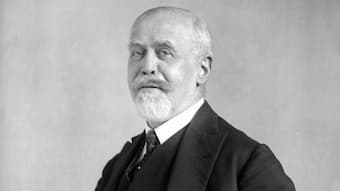
Paul Dukas
We’ll start with looking at the piano pieces.
The first work in the book was La Plainte, au loin, du faune… (Lament, from afar, of the Faun) by Paul Dukas (1865-1935). This was his homage to one of the best known of Debussy’s works, the Prelude to the Afternoon of a Faun.
Created as a piano work, it is a tribute that brings forth the elegant lines and longing in Debussy’s signature work. Yet, as this is a memory piece, it’s as though the faun is only a memory, and perhaps a memory seen through a haze.
Paul Dukas: Le Tombeau de Claude Debussy – No. 1. La plainte, au loin, du faune … (Lev Tomer, piano)
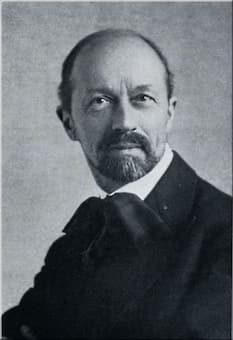
Albert Roussel
Albert Roussel (1869-1937) entitled his work L’Accueil des Muses (The Acceptance of the Muses) followed by ‘In memoriam Debussy’ and has styled it as a journey to the home of the Muses on Mount Parnassus, beginning low and ending up in an impossibly high, clear register. Debussy’s use of Greek mythology in his music is reflected in Roussel’s tribute.
Albert Roussel: Le Tombeau de Claude Debussy – No. 2. L’accueil des Muses, “In memoriam Debussy” (Lev Tomer, piano)
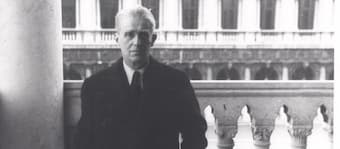
Gian Francesco Malipiero
Gian Francesco Malipiero (1882-1973) drew upon his musicological studies to create an archaic work in the medieval mold that has more than a slight bow to Debussy’s own neo-archaic Prélude, La Cathédrale engloutie (‘The Submerged Cathedral’).
Gian Francesco Malipiero: Le Tombeau de Claude Debussy – No. 3. Hommage à Claude Debussy: Lento (Lev Tomer, piano)
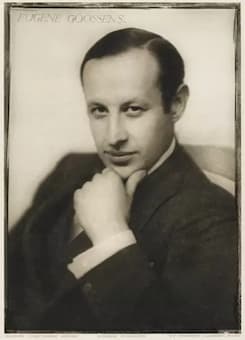
Eugene Goossens
Eugene Goossens’ (1893-1962) work of homage contrasts two very different musical styles: a kind of Schoenberg-Berg Second Viennese school style mixed with the shimmering impressionism associated with Debussy.
Eugene Goossens: Le Tombeau de Claude Debussy – No. 4. Hommage à Debussy, Op. 28 (Lev Tomer, piano)
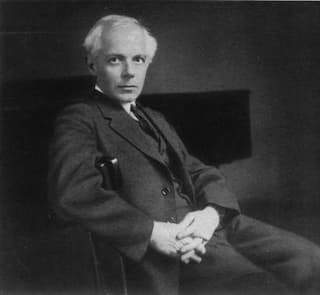
Béla Bartók in 1927
Béla Bartók (1881-1945) created an improvisation on a Hungarian peasant song that later became the 7th improvisation in his Improvisations on Hungarian Peasant Songs, op. 20, BB 83. Bartók combined his folk material with the kind of complex background chords that Debussy frequently used. The multi-layered effect of chords versus folk-type material can be found, for example in works such as Estampes and in the Préludes.
Béla Bartók: Improvisations on Hungarian Peasant Songs, Op. 20, BB 83 – No. 7. Sostenuto, rubato (Le Tombeau de Claude Debussy: No. 5) (Lev Tomer, piano)

Florent Schmitt (ca. 1910)
More piano works and the small chamber pieces.
Florent Schmitt (1870-1958) takes a couple of favorite Debussy themes for his building material: the character of Pan or of a faun and the idea of moonlight to create a work that crosses many stylistic boundaries. It’s post-Wagnerian and Romantic as well as being Impressionistic. The work is the most challenging of the piano works in the collection.
Florent Schmitt: Mirages, Op. 70 – No. 1. A la mémoire de Claude Debussy: Et Pan, au fond des blés lunaires, s’accouda (Le Tombeau de Claude Debussy: No. 6 (Lev Tomer, piano)
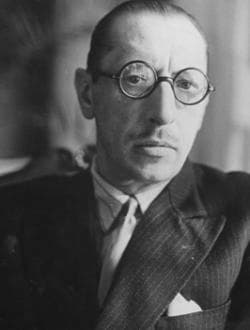
Igor Stravinsky
Igor Stravinsky (1882-1971) and Debussy had a mutual fascination society – Stravinsky admired the older composer’s revolutionary style and Debussy admired Stravinsky’s innovations. When Henry Prunières contacted Stravinsky, he was in the middle of composing a work for wind instruments. He took out the final chorale and made it into a piano work. Later, feeling that this wasn’t enough, he took the whole work from which he’d excerpted this movement, now entitled Symphonies for Wind Instruments, and dedicated the whole work to Debussy. Stravinsky’s work is intended as homage to Debussy, the master of tone colour, in presenting sounds that pass from instrument to instrument as a kind of cloud of sounds.
Igor Stravinsky: Le Tombeau de Claude Debussy – No. 7. Fragment des Symphonies pour instruments à vent à la mémoire de Claude Achille Debussy (Le Tombeau de Claude Debussy: No. 6 (Lev Tomer, piano)
In the full work, the Symphonies of Wind Instruments, we can hear Stravinsky’s bow to Debussy more clearly.
Igor Stravinsky: Symphonies of Wind Instruments (1947 version) (Buchmann-Mehta Symphony Orchestra, Tel Aviv University; Zeev Dorman, cond.)
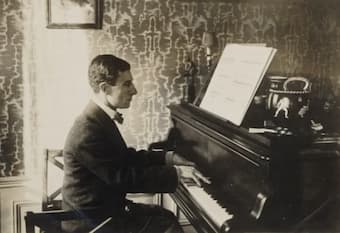
Maurice Ravel
Maurice Ravel (1875-1937) contributed a work for violin and cello that was later to become the first movement of his Sonata for Violin and Cello. What is very much in the style of Debussy is the transparency of each instrument’s melodic line – it’s been called a ‘concentrated neo-Classical clarity,’ in lieu of the soft-focused Impressionism he’s better known for.
Maurice Ravel: Sonata for Violin and Cello – I. Allegro (Le Tombeau de Claude Debussy: No. 8) (Janna Gandelman, violin; Dmitry Yablonsky, cello)
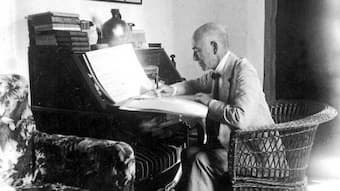
Manuel de Falla
Manuel de Falla (1876-1946) originally wrote his Homanje (Tribute) for guitar before he made the piano version. He also later orchestrated it and made it part of a larger orchestral work entitled Homages (Tributes), which he completed in 1939. The work is in habanera rhythm, with alternating duple and triple rhythms. At the very end, there’s a quote from Debussy’s La Soirée dans Grenade.
Manuel de Falla: Le Tombeau de Claude Debussy – No. 9. Homenaje (version for guitar) (Ruben Seroussi, piano)
Played on the piano (as in Falla’s piano arrangement), we don’t quite have the same flow as in the guitar version, but we do have a work that is more idiomatic for the piano – the melody emerges more clearly, etc.
Manuel de Falla: Le Tombeau de Claude Debussy – No. 9. Homenaje (version for piano) (Lev Tomer, piano)
The final contribution to this memorial volume was by Erik Satie (1866-1925). He wrote a song from the poet Alphonse de Lamartine’s L’Isolement (Isolation).
Que me font ces vallons, ces palais, ces chaumières,
Vains objets dont pour moi le charme est envolé?
Fleuves, rochers, forêts, solitudes si chères,
Un seul être vous manque, et tout est dépeuplé.
What do these valleys, these palaces, these cottages mean for me,
Vain objects whose charm for me is gone?
Rivers, rocks, forests, solitude so dear,
One person gone and everything is empty.
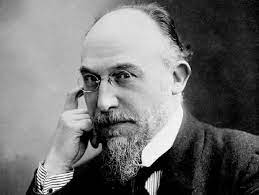
Erik Satie
The verse occurs in the middle of a 13-verse poem and carries the central theme of the missing person. For Lamartine, in the hills above his father house, he sat reading Petrarch and thinking of a friend he’d lost a year earlier.
Satie gave the work a long explanatory title: En souvenir d’une admirative et douce amitié de trente ans (In memory of an admiring and sweet 30-year friendship)
Erik Satie: Le Tombeau de Claude Debussy – No. 10. En souvenir d’une admirative et douce amitié de trente ans: Que me font ces vallons (Sharon Rostof-Zemir, soprano; Lev Tomer, piano)
It speaks well for the commissioner, Henry Prunières, to have assembled such a group of both leading and upcoming composers. It’s also an interesting examination of which each composer took from Debussy’s long career and how they tried to represent it in their own terms. In the first piece, Paul Dukas, by using Debussy’s characteristic intervals, calls the faun back to our memory. In the final piece, Satie’s brief piece expresses his grief at the loss of his long-time friend. Sound and feeling both have a place in this memorial.
For more of the best in classical music, sign up to our E-Newsletter
